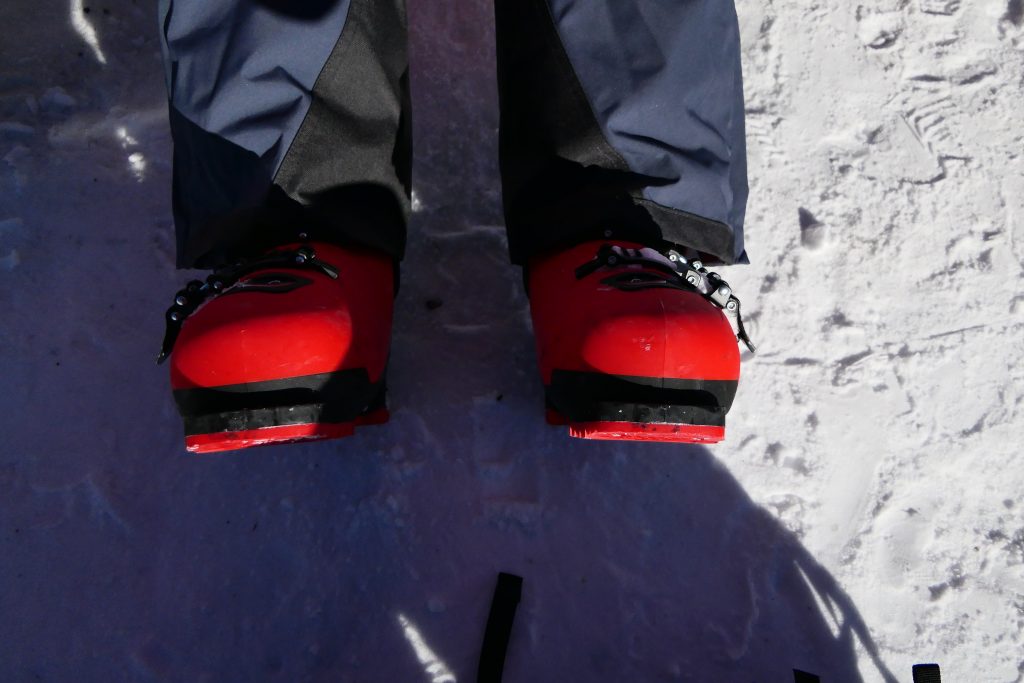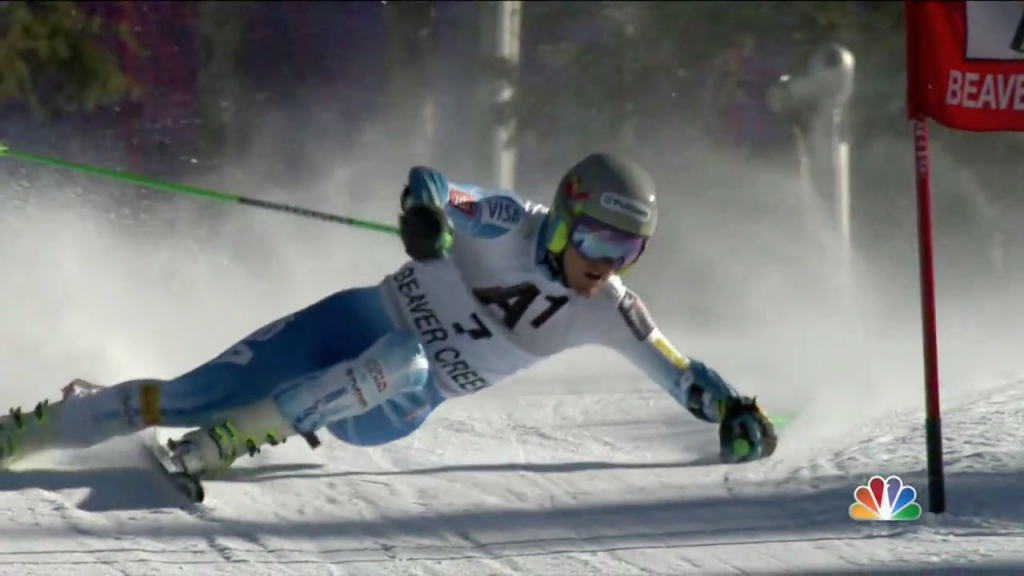The videos show “before” and “after” the introduction to “dynamics”.
Nobody was given feedback on their skiing prior to working on dynamics. Most problems in skiing are directly created by the error of teaching “balance” (“…move your body to the outside.” as Lindsay said!) instead of “dynamics” (disequilibrium/accelerations) and they automatically begin to resolve once the skier starts to use and develop dynamics.
Once dynamics are integrated into the skiing then it’s a case of improving awareness and building skills – not an exercise in correcting errors.
The “Dynamics” link in the menu at the top of this blog page provides all the basic details and explanation of dynamics. (including the “magic wall” etc)
Lewis’s boots before adjusting the canting – I’ll check this again tomorrow – they appeared to have previously been canted in the wrong direction. The mechanisms are however very confusing sometimes.

Extra exercises were necessary to clarify the act of “moving the centre of mass” and skating turns were used for this purpose.
Special attention is required toward the end of a turn on steeper terrain because the ski is always under-cutting your trajectory when using dynamics and that means it’s trying to lift you up and lever your centre of mass out of the turn. Near the end of a turn the forces on the ski are greater due to now resisting gravity – so the leverage out of the turn is much stronger – so the skier has to drive the centre of mass inward even more until the turn is completely finished and there’s a desire to begin the next one.
Remember the turn starts with a single skate – extension of the uphill leg – which remains strong and using the bones stacked on top of each other for the whole turn. See the racer below for a basic example of a skier with a huge dynamics range…
Meanwhile – despite the leg extension – the centre of mass itself drops down into the turn – exactly like a motorbike turning at speed – and it comes back up out of the turn.


